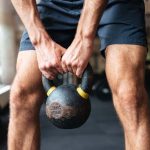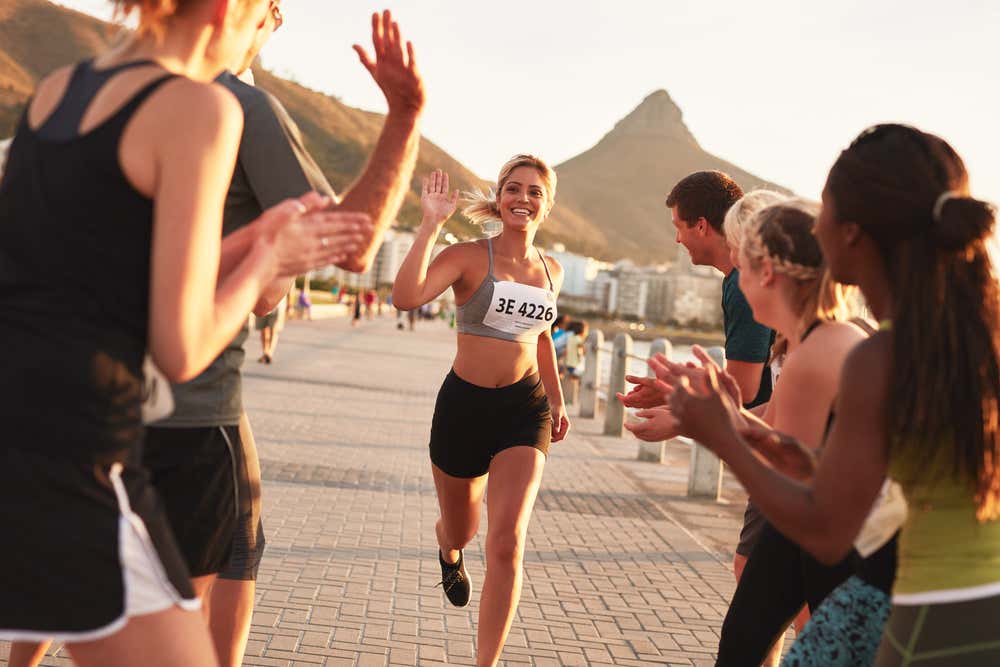


Are you looking to enhance your sports performance and improve your health? We tell you what conditional physical abilities consist of and how you can develop them.

Physical condition is decisive when it comes to achieving better sports performance. This can be improved through training and exercise, and health benefits are achieved in the process. Keep reading to learn what conditional physical abilities are and what they consist of.
They are defined as the qualities that the human being possesses and that are executed in physical activity. According to experts, these include speed, strength, flexibility and endurance.
They are conditioned by the body’s energy systems and can be obtained or improved with specific training methods. The motor actions applied to physical activity involve all muscle groups and joints. The more we develop our physical abilities, the better our performance will be..
Know the conditional physical abilities one by one
As already mentioned, there are four conditional physical capabilities:
- Speed.
- Force.
- Endurance.
- Flexibility or range of motion.
They are linked to the physical performance and training of each person.. Likewise, they are characterized by being easily observable and measurable, since they are specified based on functional anatomical aspects. By putting them into practice, we are carrying out actions consciously and voluntarily.
1. Speed
The speed is the physical capacity that allows us to perform movements or actions in the shortest time possible. It is one of the key qualities that an athlete must develop for many practices. According to research, it involves traveling a distance in the shortest possible time using certain coordination, strength, energy and range of motion.
Types of speed
Speed can be expressed in different ways, among them we find the following types:
- Translation or displacement: It is the ability to travel a distance in the shortest time possible. It has been stipulated that it develops in proportion to strength and coordination. Furthermore, during adolescence speed experiences an increase parallel to strength.
- Reaction: It is the time it takes for the athlete to receive a stimulus and perform the first action. It involves from the latent period to contraction. For example, when a whistle sounds and the athlete makes the first movement to start the competition, such as starting a marathon or jumping into the water in a swimming test. It’s about the speed of reflexes.
- Gesture or movement: It is the competition of performing acyclic movements at maximum speed against low resistance, such as hitting in tennis. It is determined by the automation of movement, location and spatial orientation.
- Resistance: It is the body’s ability to counteract fatigue during the duration of exercise or competition. It has to do with being able to sustain maximum performance for a long time.
- Acceleration: quality of increasing speed until reaching the maximum point in the shortest possible time.
- Maximum speed: It consists of maintaining the maximum point over time once achieved. It will be determined according to the physical capabilities of each one.
- Mental speed: It’s about coordination. It is the ability to change direction in the shortest time possible. To do this, you must have control of your extremities to move them quickly.

2. Strength
The force is the physical fitness that allows one to overcome, endure or press resistance, or react to it, through muscular tension. According to studies, strength is the result of the activation of the locomotor system (muscles) and the direction system (central nervous system) that sends the orders for contraction.
Exercises for muscle development allow us to increase strength and improve our condition. Therefore, it is important to include them in your training routine.
Types of force
Based on the type of muscle contraction, strength is classified as follows:
- Static: is the tension of a muscle group to overcome resistance without changes in the length of the contractile fibers.
- Dynamic: There is an increase in the tension of the contractile structures with changes in the length of the muscle fibers, that is, there is displacement. This in turn can be activewhen it is the result of a simple work cycle (shortening), and reactivewhen produced by a double work cycle (stretching and shortening).
Likewise, depending on the speed and time of exercise, there are four types of strength in physical activity:
- Resistance force: It is the body’s ability to maintain a constant force for the duration of the activity. For example, in weightlifting, the load used, intensity and duration in maximum repetition cycles will be measured.
- Maxim: This is the greatest amount of force that can be applied in the face of a given resistance. With maximum strength work we can achieve muscle hypertrophy, burn calories and improve sports performance.
- Quick: This force is developed at a high speed, although not maximum, to overcome external resistance and control the phases of muscle contraction. When cycling, rowing, running a marathon or doing burpeesthe use of rapid force is required.
- Explosive: allows you to overcome a resistance, not a limit, at a maximum speed. It is common in acyclic gestures, such as jumping, volleyball spikes, and throwing.
3. Flexibility or range of motion
Flexibility is stretchability of muscles and joint mobility for greater range of motion. Experts suggest that this ability reduces and degenerates over time, so specific training can be done to maintain or improve it.
Yoga, rhythmic gymnastics or wrestling are examples of practices that require great flexibility. One study determined that strength training can contribute to the development and maintenance of joint mobility; even without additional stretching.
Types of flexibility
In general, the following types of flexibility are recognized:
- Static: There is only elongation of muscle fibers for a short period of time.
- Dynamic: Muscle stretching and shortening alternate, maintaining tension for a couple of minutes. It is developed from activities that require joint mobility. It appears in warm-up exercises, in which the muscles increase temperature, activation, strength and speed in their contraction.
- Passive: This is when an external aid facilitates the range of motion. This can happen if we have the collaboration of a partner or the force of gravity.
- Active: It is the stretching of a muscle or displacement of a joint by activation of antagonist muscles. For example, contract the quadriceps to lengthen the hamstrings.
4. Resistance
Resistance is the ability to perform physical effort for a long time, endure the fatigue that entails and recover quickly from it, according to studies. In this sense, they are the different adaptation mechanisms of the body to prolong the time of onset of fatigue and cope with it.
According to a work published in Current Sports Medicine Reportsthe benefits of resistance training include movement control, walking speed, functional independence, cognitive abilities and self-esteem, among others.
Types of resistance
Resistance can be aerobic or anaerobic and a combination of both is recommended in training:
- Aerobics: It is what allows us to carry out an activity for as long as possible. The energy supply is received through aerobic glycolysis, lipid metabolism in long-duration exercises, and from proteins in extreme situations. It is applied in activities, such as going jogging, dancing or riding a bicycle.
- Anaerobic: It is when an intense and violent activity is practiced in short periods of time. In this, energy is received from stored glycogen and phosphatenes, such as ATP. For example, in bodyweight lifting or short sprints.

Is it the same as coordinative capabilities?
Sometimes, the concept of conditional physical capabilities and coordinative capabilities is often confused. Nevertheless, There are several differences worth highlighting..
When we refer to coordinative capacities we speak of the quality of synchronizing, regulating and directing, in a very fine way, movements to achieve a specific activity.
In this sense, it involves the sum of different skills with a single motor purpose. This involves the following special abilities:
- Orientation: It allows determining the spatiotemporal location of movements in relation to the objects that surround the person.
- Balance: ability to maintain and recover body position during a movement.
- Rhythm: ability to produce an ordered frequency of movement.
- Reaction: rapid disposition of movements upon a signal.
- Anticipation: ability to foresee the purpose and result of a movement.
- Differentiation: identification and control of each movement under an aspect of accuracy, dosage and economy.
- Coupling or synchronization: coordination of individual motor phases to achieve complete movement.
Boost your capabilities!
The development of conditional physical abilities is a key factor in improving sports performance, so it is advisable to include varied exercises in our routine. Of course, you have to maintain discipline and regularity to achieve evolution.
Besides, We must follow good eating routines and other healthy habits.. On the other hand, remember that overtraining can be harmful, so it is necessary to consult a professional.

